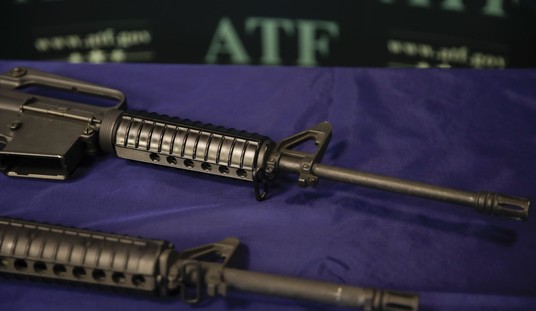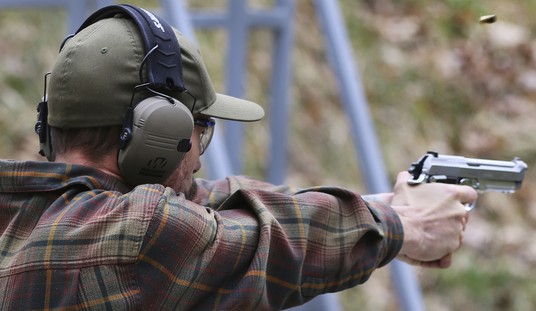Do you know what kind of guns your neighbors have? Do you care?
If you're like a lot of gun owners, not really, except in regards to possibly getting to shoot it at the range someday.
Most folks don't know and generally don't care all that much. Not unless someone gives them a reason to care. How you store it might be of interest to them, but that only matters if they know you have guns.
Yet a recent study claims that not only do they care about how you store them, but they also don't want to live near you if you have an AR-15.
A recent study published in the Proceedings of the National Academy of Sciences reveals that across all political and social groups in the United States, there is a strong preference against living near AR-15 rifle owners and neighbors who store guns outside of locked safes. This surprising consensus suggests that when it comes to immediate living environments, Americans’ views on gun control may be less divided than the polarized national debate suggests.
...
To scientifically investigate this, the researchers conducted two experiments using a Qualtrics survey involving a diverse national sample of 2,135 adult U.S. residents. The sampling strategy was purposively designed to ensure a broad range of demographic, political, socioeconomic, and geographic representation. Approximately 35% of the participants indicated that they owned guns.
It should be noted that this is lower than the percentage of homes known to have a gun, which The Hill reported to be at least 42 percent in 2023.
In other words, the researchers underrepresented gun owners as a percentage of society.
And since we also know that a lot of gun owners refuse to answer surveys honestly about whether or not they have firearms, the actual numbers are likely to be significantly higher than that. That means this sample of the United States isn't reflective of the United States in the least.
Then we have the experiments themselves.
In the first experiment, the researchers employed a method known as conjoint analysis, which is widely used in social sciences to measure preferences. They presented participants with profiles of hypothetical neighbors who varied along several attributes, including whether the neighbor owned a gun and, if so, what type. Specifically, the gun ownership attribute had three levels: no gun ownership, owning a pistol, and owning an AR-15, a semi-automatic rifle that is often highlighted in debates over gun control due to its use in many high-profile mass shootings.
Participants were asked to choose between pairs of these hypothetical neighbors, with each pair presented in a table format. Each neighbor profile was also defined by other characteristics that could influence perceptions of gun owners, such as gender, race/ethnicity, political affiliation, religious beliefs, family status, and socioeconomic status. This design aimed to mimic the complexity of real-world decisions, where multiple factors are considered simultaneously.
The result was that people preferred to live by either non-gun owners or handgun owners, rather than AR-15 owners.
However, this is about preference and there doesn't appear to have been an option regarding not caring one way or another. In other words, they offered a case where people had to select a preference that wasn't necessarily indicative of their overall beliefs.
And this is supposed to show that we all really are that we don't like AR-15s, despite it being the most popular firearm model in the nation.
However, the deck is stacked. Many non-gun owners, if absolutely forced to choose, will probably say they'd rather not live next to someone with a firearm that has been demonized by the media relentlessly for decades, but in their day-to-day lives, they don't actually care all that much.
And it gets better.
The second experiment focused on another crucial aspect of gun ownership: storage practices. This experiment utilized a picture-based factorial vignette approach, where participants were shown a scenario involving a neighbor’s gun storage method. The vignette described a social gathering at a neighbor’s house, during which a gun was spotted in an opened drawer. The storage condition of the gun—either secure (locked and unloaded, with variations of a gun safe or a chamber lock) or insecure (unlocked and loaded)—was randomly assigned to each vignette.
I mean, first, why is someone leaving the drawer with their gun open where their guests can see it plain as day? Literally no one does that, and if I came across someone who did, I'd probably be less than thrilled with having them for a neighbor.
It's not indicative of my views on guns, either. It's indicative of my views that my neighbor is an idiot. I'd rather not have an idiot next door who not just leaves a gun unsecured, but all but tempts people to steal it by leaving it in an opened drawer.
Somehow, I don't think these "researchers" accounted for that.
Further, I'm curious about what else they checked for. After all, while they celebrate the strong findings, are those findings equally strong for neighbors who play loud music? What about smokers? What about people with hobbies that use loud machines or practices like woodworking or metalworking?
Of course, they checked for none of that, and that's important.
They force people to make a choice, and then present that choice as if it's something that people feel vehemently about, all without any evidence proving they do. Especially in comparison to other things people might have opinions about.
Once again, we see how pretty much any research involving guns is absolute garbage.








Join the conversation as a VIP Member